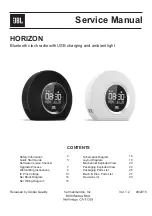
MM-014716-001
13
3
OPERATION SAFETY RECOMMENDATIONS
3.1
TRANSMITTER HAZARDS
The operator of any mobile radio should be aware of certain hazards common to
the operation of vehicular radio transmitters. A list of several possible hazards is
given:
•
Explosive Atmospheres –
Just as it is dangerous to fuel a vehicle with the motor running, similar
hazards exist when operating a mobile radio. Be sure to turn the radio off while fueling a vehicle. Do
not carry containers of fuel in the trunk of a vehicle if the radio is mounted in the trunk.
Areas with potentially explosive atmosphere are often, but not always, clearly marked. Turn OFF
your radio when in any area with a potentially explosive atmosphere. It is rare, but not impossible that
the radio or its accessories could generate sparks.
•
Interference to Vehicular Electronics Systems –
Electronic fuel injection systems, electronic anti-
skid braking systems, electronic cruise control systems, etc., are typical electronic systems that can
malfunction due to the lack of protection from radio frequency energy present when transmitting. If
the vehicle contains such equipment, consult the dealer and enlist their aid in determining the
expected performance of electronic circuits when the radio is transmitting.
•
Electric Blasting Caps –
To prevent accidental detonation of electric blasting caps,
DO NOT
use
two-way radios within 1000 feet of blasting operations. Always obey the “
Turn off Two-Way
Radios
” signs posted where electric blasting caps are being used. (OSHA Standard: 1926-900)
•
Liquefied Petroleum (LP) Gas Powered Vehicles –
Mobile radio installations in vehicles powered
by liquefied petroleum gas with the LP gas container in the trunk or other sealed-off space within the
interior of the vehicle must conform to the
N
ational
F
ire
P
rotection
A
ssociation standard
NFPA 58
requiring:
¾
The LP gas container and its fittings.
¾
Outside filling connections shall be used for the LP gas container.
¾
The LP gas container shall be vented to the outside of the vehicle.
3.2
SAFE DRIVING RECOMMENDATIONS
(Recommended by AAA)
•
Read the literature on the safe operation of the radio.
•
Keep both hands on the steering wheel and the microphone in its hanger whenever the vehicle is in
motion.
•
Place calls only when the vehicle is stopped.
•
When talking from a moving vehicle is unavoidable, drive in the slower lane. Keep conversations
brief.
•
If a conversation requires taking notes or complex thought, stop the vehicle in a safe place and
continue the call.
•
Whenever using a mobile radio, exercise caution.
Содержание M/A-COM
Страница 1: ...Operator s Manual MM 014716 001 Jun 08 M A COM M7300 Series Digital Mobile Radio...
Страница 99: ...MM 014716 001 99 SYSTEM NUMBER SYSTEM NAME TRK CNV GRP CHN NUMBER GRP CHN NAME USE...
Страница 100: ...MM 014716 001 100 SYSTEM NUMBER SYSTEM NAME TRK CNV GRP CHN NUMBER GRP CHN NAME USE...
Страница 101: ...MM 014716 001 101 SYSTEM NUMBER SYSTEM NAME TRK CNV GRP CHN NUMBER GRP CHN NAME USE...
Страница 103: ...MM 014716 001 103 This page intentionally left blank...














































